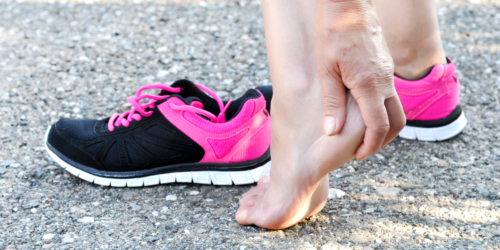What would podiatrists like us to know about our feet?
Now that it’s 2017, it’s a good time to begin putting those New Year’s resolutions into practice. Why not start at the bottom and work our way up? Our feet, which many of us tend to ignore and/or neglect throughout the year, are susceptible to a variety of problems. Since most of us give our feet a tough workout every single day (at least 8,000 steps), why not take a little time to think about making the New Year one in which our feet receive the care and concern they deserve. Besides heeding the recommendations below, your feet should be checked regularly by a skilled and experienced podiatrist. Not only will the doctor make sure your feet are in tip-top condition, but he or she will often be able to diagnose other problems about your general health from the condition of your feet.
Best Advice
Some of the recent recommendations from professional podiatrists may be similar to the advice your mother gave you as a child, including:
-
Don’t go into public showers or locker rooms with bare feet
Floor surfaces in public venues — e.g. gym locker rooms, public showers — are crawling with fungus and other germs. Do your feet a favor and wear flip-flops or water shower shoes when you are in such locations. If you get pedicures or foot massages, try to make appointments early in the day when the tubs are probably cleanest. Also, wash and dry your feet thoroughly every day.
-
Pay attention to your feet
Realize that your feet are important body parts and may give you and your doctors information about your general health. Foot skin that is thinner, less hairy, or shinier than usual may indicate peripheral arterial disease (PAD) which can be a precursor to heart disease or stroke. Also, dry skin and foot ulcers that don’t heal may indicate undiagnosed diabetes.
-
Wear sensible shoes
Though you may be young and fashion conscious, bear in mind that you will likely pay a high price for wearing pointy, high-heeled, or ill-fitting shoes. While you may look glamorous for a few years, you are at increased likelihood of developing painful bunions, calluses, blisters, ingrown toenails, deformed toes, or sores in the future. Ill-fitting shoes are particularly dangerous to diabetics who may develop diabetic neuropathy.
-
The significance of toe length
It’s estimated that 20 to 30 percent of Americans have a condition known as Morton’s toe in which their second toes are longer than their big toes. These individuals are at increased risk for bunions, hammertoes, and even back problems and should be particularly careful to wear shoes that fit properly.
-
Toenail fungus can cause serious problems
While most people are aware of the discoloration and textural changes of toenails affected by nail fungus, many don’t realize that, if it worsens, toenail fungus can cause a separation between the nail and the nail bed. In addition to keeping the feet as scrupulously clean and dry as possible, cutting-edge podiatrists are able to use laser treatments to correct the condition.
-
Feet really do enlarge as we age
Though putting on weight may increase the problem, most people’s feet increase a half-size or more as they age. This is because tendons and ligaments lose elasticity. Because older feet are larger, it’s important to have them measured accurately whenever you get new shoes to make sure you are still getting fitted properly.
-
Diabetics have to take special care of their feet
Individuals with diabetes should check their feet daily, since the condition can exacerbate any cuts or blisters until they become ulcers. Infected wounds easily become infected in diabetics and can lead to extreme consequences, such as amputation. Moreover, of the 70,000 American diabetics who lose a foot every year, 50 percent have a chance of dying within 5 years of the operation.


